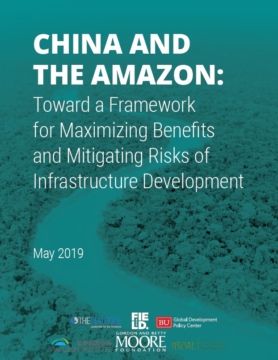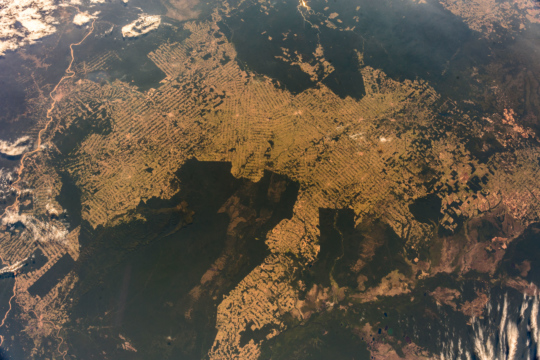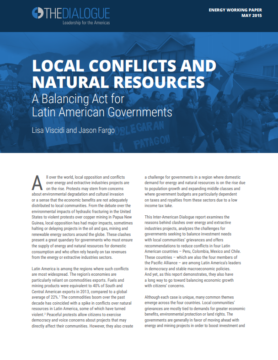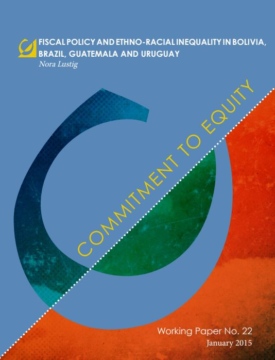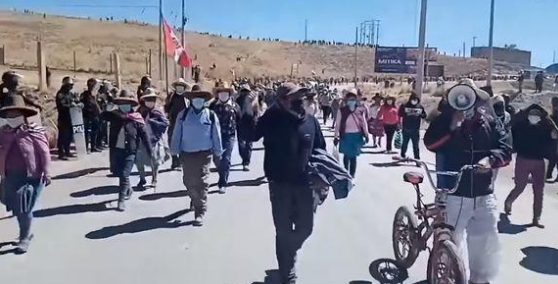
Peace and the Environment in Colombia
Peace in Colombia promises to bring many environmental benefits to the country, but also poses environmental risks .
Peace in Colombia promises to bring many environmental benefits to the country, but also poses environmental risks .
Dos nuevas pasantías realizará en el año 2002 el “Programa de Pasantías Estímulo a la Innovación Educativa en América Latina”, de PREAL con el BID. Los países de destino serán México, para conocer los programas de mejoramiento de la calidad y equidad para poblaciones pobres e indígenas, y Guatemala y…
Under President Juan Manuel Santos, the Colombian government has vastly expanded protected areas, creating new national parks and providing land titles to indigenous and Afro-Colombian communities in the Amazon, Chocó and other important forest regions. However, many challenges remain. National parks and indigenous and Afro-Colombian lands continue to be threatened by illegal occupation, coca cultivation and illegal gold mining.
The less than 3 percent of Colombia’s population that lacks electricity lives mainly in areas of the country that have long been controlled by the FARC and other armed groups, such as Chocó in the Pacific, La Guajira on the Caribbean coast, and Putumayo in the Amazon. Not coincidentally, Colombians without access to electricity also have higher rates of poverty, fewer basic public services, and lower education levels than the rest of the country.
The largest tropical rainforest on the planet, the Amazon plays a critical role as a storehouse of carbon and mediator of the global water cycle and holds a greater share of the world’s known biodiversity than any other ecosystem. However, unchecked development is placing the Amazon under threat, pushing deforestation rates to near-record levels throughout the region.
The development of energy resources is an integral component of many of Latin America’s economies, from established producers like Colombia and Brazil to newcomers to the global energy market like freshly oil-rich Guyana. However, policymakers and energy companies throughout the region must devise solutions to a variety of fiscal, political, social, and environmental hurdles to ensure successful and sustainable projects, explained speakers at an Inter-American Dialogue event on May 10.
The emergence of China as a new economic partner presents trade offs for Amazon basin countries. Without special care to avoid and minimize ecological and social impacts, the costs of development run the risk of outweighing its gains.
Countries in the Amazon Basin are falling behind on their targets to cut deforestation. Environmental enforcement combined with economic incentives could provide a way forward, write Lisa Viscidi and Enrique Ortiz in this op-ed.
Conflicts over energy and natural resources are leading to social turmoil and posing serious challenges for investment projects all over Latin America. To better manage such conflicts, Latin American governments must step up their involvement in the consultation process and communicate more effectively with local communities about potential social, environmental and economic impacts, according to a new report by the Inter-American Dialogue.
African descendants and indigenous peoples in Latin America face higher poverty rates and are disproportionately represented among the poor. Per capita income of the white population can be sixty percent higher to twice as high as the per capita income of the African descendant and indigenous populations.
A Latin America Advisor Q&A featuring experts’ viewpoints on protests affecting Peru’s copper mining industry.
 Video
Video
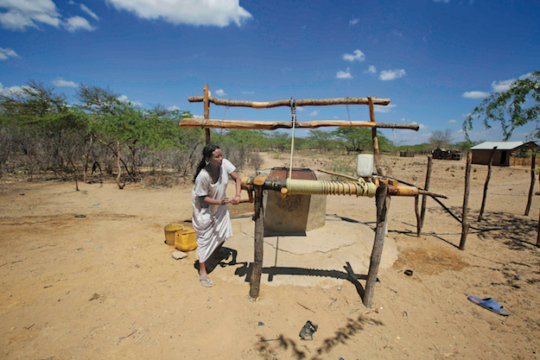
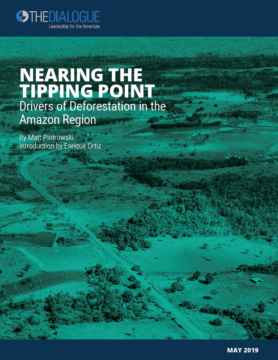
 Video
Video
